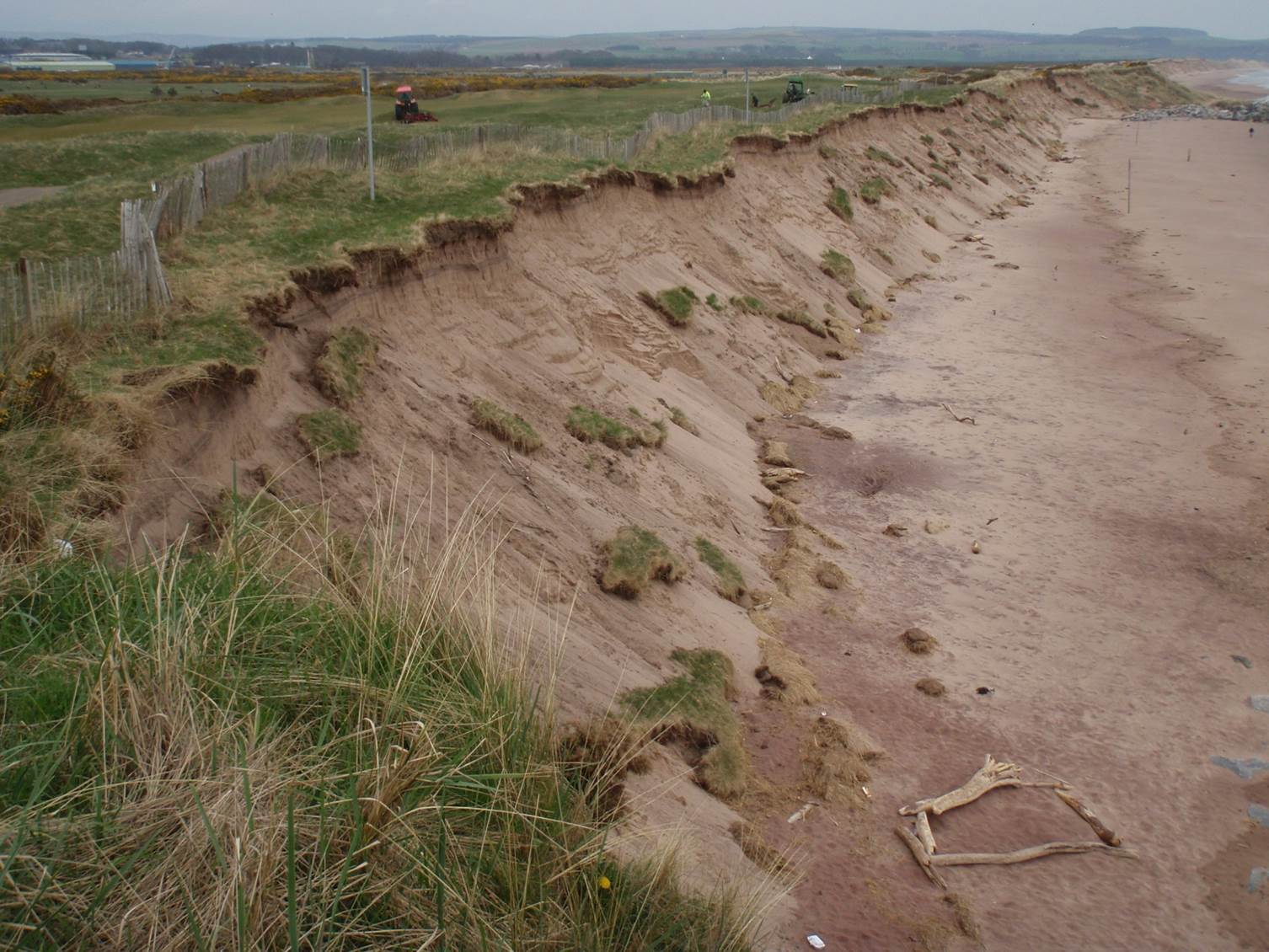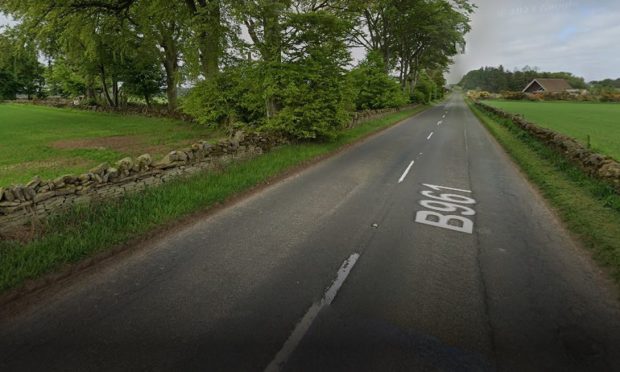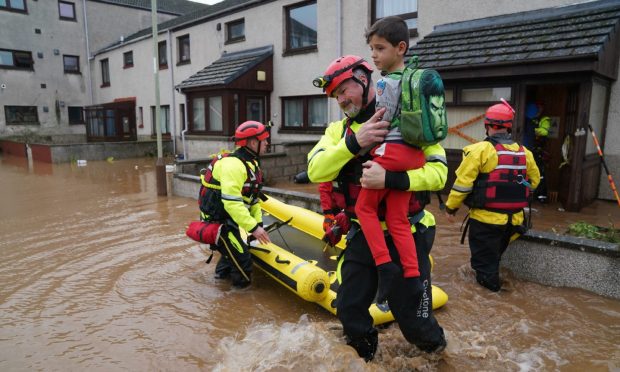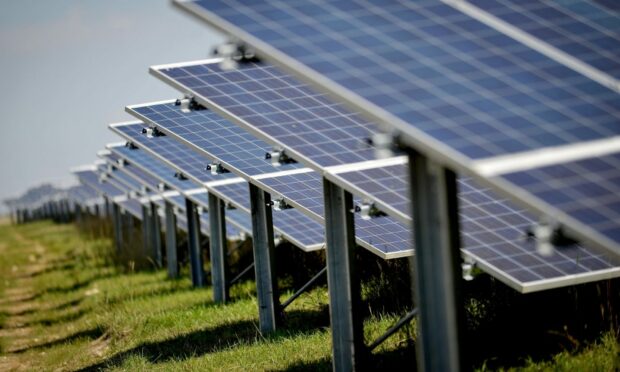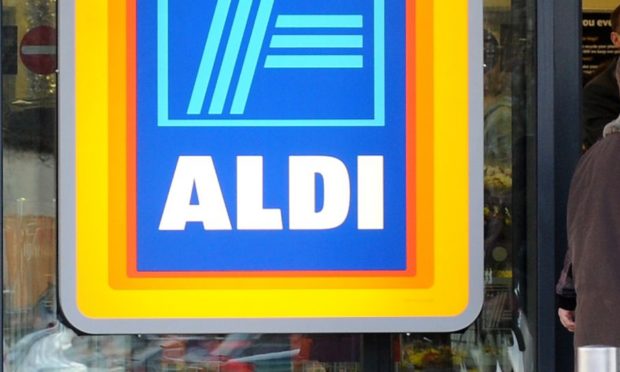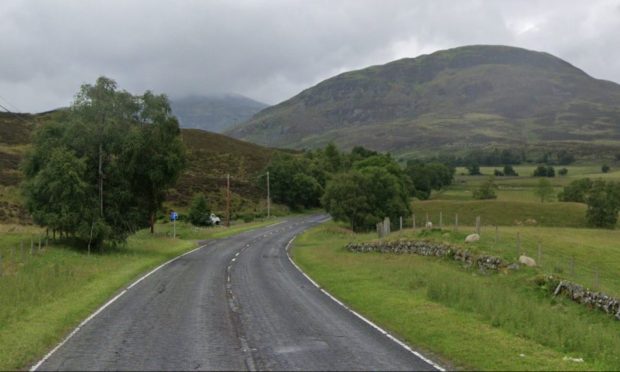A Tayside coastal erosion expert has warned the sea has crept 70 metres towards Montrose within the last 30 years.
Dundee University post doctoral researcher Dr Fraser Milne confirmed that the historic golf links are now under threat due to erosion occurring in the largely unprotected dunes fronting the Medal course.
He said “human interference” had contributed towards the town’s erosion problem, namely the removal of more than a million tonnes of sediment from the South Esk estuary since 1984 which has then been taken out of the coastal system.
Addressing Montrose Natural History and Antiquarian Society, Dr Milne said:
“Dune retreat at golf course frontage commenced around the late 1980s.
“Prior to this the dune system at this part of the bay appears to have been in balance.
“The change in sediment dynamics during the late 1980s caused by change in wave climate.
“Since 1988 there has been up to 70m of dune retreat at the southern golf course frontage and erosion is now threatening the current layout of Montrose Medal Links Golf course.”
Dr Milne said that although erosion was predominantly a natural process, the loss of dredged material had contributed to the problem.
He calculated that more than 1.5 million tonnes of sediment had been removed from the South Esk estuary since 1984 which had been “dumped offshore and lost to the coastal system”.
Rising sea levels is another threat to the town.
Dr Milne said: “Annual dredging of South Esk estuary is essential to
maintain access to the harbour due to infilling from the neighbouring beach.
“An average of 53,900 m3 is removed per annum, with a total of 1,563,112 m3 removed between 1984 and 2012.”
